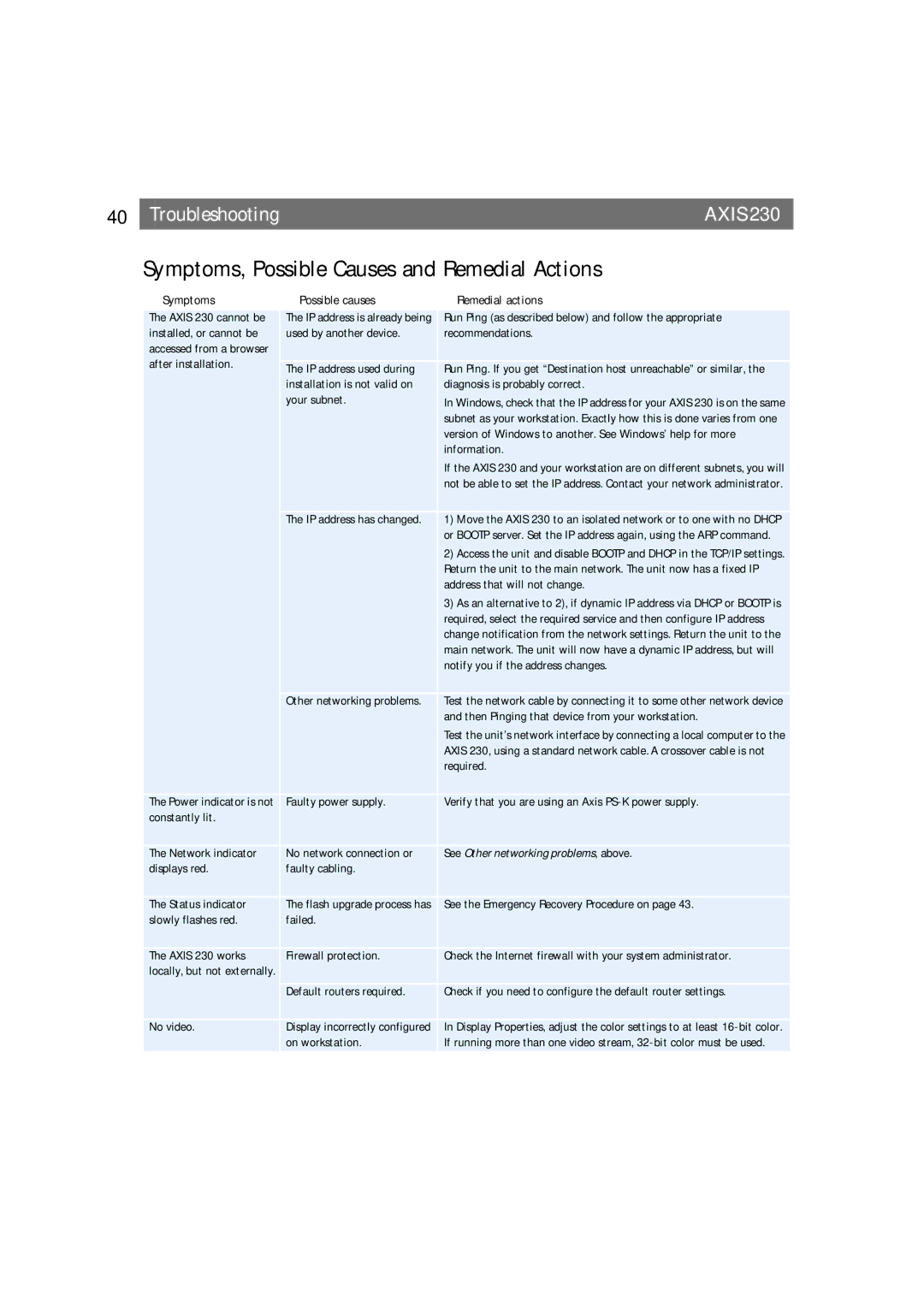
40 | Troubleshooting | AXIS 230 |
Symptoms, Possible Causes and Remedial Actions
Symptoms | Possible causes | Remedial actions |
|
|
|
The AXIS 230 cannot be | The IP address is already being | Run Ping (as described below) and follow the appropriate |
installed, or cannot be | used by another device. | recommendations. |
accessed from a browser |
|
|
after installation. | The IP address used during | Run Ping. If you get “Destination host unreachable” or similar, the |
| ||
| installation is not valid on | diagnosis is probably correct. |
| your subnet. | In Windows, check that the IP address for your AXIS 230 is on the same |
|
| subnet as your workstation. Exactly how this is done varies from one |
|
| version of Windows to another. See Windows’ help for more |
|
| information. |
|
| If the AXIS 230 and your workstation are on different subnets, you will |
|
| not be able to set the IP address. Contact your network administrator. |
| The IP address has changed. | 1) Move the AXIS 230 to an isolated network or to one with no DHCP |
|
| or BOOTP server. Set the IP address again, using the ARP command. |
|
| 2) Access the unit and disable BOOTP and DHCP in the TCP/IP settings. |
|
| Return the unit to the main network. The unit now has a fixed IP |
|
| address that will not change. |
|
| 3) As an alternative to 2), if dynamic IP address via DHCP or BOOTP is |
|
| required, select the required service and then configure IP address |
|
| change notification from the network settings. Return the unit to the |
|
| main network. The unit will now have a dynamic IP address, but will |
|
| notify you if the address changes. |
| Other networking problems. | Test the network cable by connecting it to some other network device |
|
| and then Pinging that device from your workstation. |
|
| Test the unit’s network interface by connecting a local computer to the |
|
| AXIS 230, using a standard network cable. A crossover cable is not |
|
| required. |
The Power indicator is not | Faulty power supply. | Verify that you are using an Axis |
constantly lit. |
|
|
The Network indicator | No network connection or | See Other networking problems, above. |
displays red. | faulty cabling. |
|
The Status indicator | The flash upgrade process has | See the Emergency Recovery Procedure on page 43. |
slowly flashes red. | failed. |
|
The AXIS 230 works | Firewall protection. | Check the Internet firewall with your system administrator. |
locally, but not externally. |
|
|
| Default routers required. | Check if you need to configure the default router settings. |
No video. | Display incorrectly configured | In Display Properties, adjust the color settings to at least |
| on workstation. | If running more than one video stream, |
|
|
|
